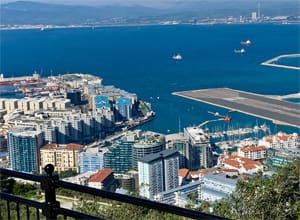Two issues of particular concern to the non-European yachtsman arriving from the Americas are the Schengen Agreement, which affects the immigration status of the foreign traveler, and the European Union (EU) regulations that affect the value-added tax (VAT) and duty requirements of the non-EU documented vessel. Let’s look at the Schengen Agreement first.
Established in 1985, the Schengen Agreement — named after Schengen, Luxembourg — effectively eliminated the borders between 26 member countries, allowing member citizens the freedom to travel between member countries without border controls. Citizens of non-Schengen countries may only travel within the Schengen Area for 90 out of every 180 days. The EU VAT and duty requirements state that a non-EU vessel must leave the EU area for at least one day out of 18 months in order to avoid paying VAT.
Many European countries belong to either the Schengen Agreement or the EU, or both. The now-infamous Brexit deal may affect American yachtsmen more than one may think, as U.K. citizens who were previously free to spend as much time in any European country due to their membership in the EU may now have to spend time outside of the Schengen Area like the rest of us. What this will do to available dockage in non-Schengen countries is anyone’s guess. This is tricky, as the entire Baltic region — with the exception of Russia and most countries in the Mediterranean region — are members of the Schengen Agreement. For yachtsmen, this requires some creative planning in terms of where to spend time outside of the area in order to remain in compliance with the law while inside the area (see sidebar for breakdown of member countries).
For U.S. vessels that begin their migration across the Atlantic with a clean Schengen clock, where they arrive will have an impact on their travel plans. For some, arriving in the north initially alleviates this issue, in that the Channel Islands and the entire U.K. (Scotland, England, Northern Ireland and Wales) are all non-Schengen areas and one can remain in this region largely without restrictions. Most of the actual European continent is Schengen, however, and where one travels next will have to be carefully planned. Yachtsmen with citizenships from America or Canada who are making their passage to the Mediterranean will have a choice of Morocco or Gibraltar for initial non-Schengen ports. Though separated by less than 30 nautical miles of water, there could be no greater chasm of distance between these two locales in terms of diversity.
 |
|
The harbor at Gibraltar. |
Gibraltar
Legends differ, but our tour guide shared his version that says Hercules broke apart the mountain connecting Europe to Africa, in its wake leaving behind the roughly 8-by-30-nm stretch of water that we know as the Strait of Gibraltar. Yachtsmen and containerships alike traverse this incredibly busy waterway, the territorial control of which has been hotly contested for more than 300 years, ever since the Spanish ceded ownership of Gibraltar to the British in the 18th century. What is not contested, however, is the value of the prime real estate known as the Rock of Gibraltar: a small area teeming with history, culture, diversity — and dockage.
Captured by the British from Spain in 1704, and once inhabited by Neanderthals for thousands of years, Gibraltar has a rich history dating back 6 million years. Yachts arriving here will have a choice between a possible three marinas on this very small, three-square-mile area. But lest you think you have no worries at all, consider this: One of those marinas is undergoing a remodel beginning in April and continuing until next January, if all goes well, further restricting the already very limited dockage available.
If you are fortunate enough to find space in Gibraltar, you will have no shortage of entertainment to occupy your time while awaiting entry into the Med. During our short three-day visit last month, we enjoyed the beautiful and iconic “Rock” for both the views that it afforded and the exercise it offered. In addition to being a wonderful place to hike, visitors will be enchanted by the famed Barbary macaque monkeys still in residence and closely guarded by park wardens. The monkeys — descendants of ancestors originally from Morocco’s Rif and Atlas mountains — are the only population of wild monkeys on the European continent, giving further credence to our earlier myth about Hercules. During our visit, we were warned that creatures have been aggressive toward visitors and, as with most wildlife, it is probably best to keep them wary of humans. The baby monkeys, however, enjoyed jumping on and playing with our 9-year-old son and were simply the cutest and most endearing creatures we’ve seen.
After visiting the monkeys, take a trip through the enchanting St. Michael’s Cave: Once considered by the Greeks to be a gate to the underworld, the cave system is now home to a stunning collection of stalagmites. And, no trip to Gibraltar would be complete without visiting the famed Great Siege Tunnels, a magnificent collection of tunnels dug out by the British in the late 18th century when under siege from the French and Spanish. The Spanish, gambling that the British were too busy with the pesky American Revolution to properly defend it, laid the final attack on Gibraltar in 1782. After the siege, work on the tunnels continued to create a nearly 4,000-foot network.
 |
|
Jack Thyrre and a new friend share a carrot in Gibraltar. |
Morocco
Across the Strait of Gibraltar, you will find three equally impressive — if not nearly as full — marinas offering a wide assortment of cruising choices for yachtsmen either arriving from or heading to the Americas. One such marina is in Tangier, centrally located between the three possibilities and a mere 30 miles from the marina in Gibraltar. Currently housing 1,400 slips in two basins, the marina offers options for the transiting yachtsman. While plans are in place to convert most of the Med-moorage slips to finger pontoons, there is ample dockage available.
Additional destinations include Rabat, an hourlong ride on the fast train from Tangier, and Tetouan further into the Med. Despite the wonderful location and ease of finding dockage heading in either direction, American yachtsmen don’t typically choose Morocco as a cruising destination. While the cultural and culinary differences make this a unconventional option for an extended stay, one must consider the wonderful opportunity for shorter stays. Economically priced, these marinas offer a chance to slip back in time to another era and experience a cultural diversity not found in most of Europe.
Wherever your cruising plans take you after crossing the Atlantic, there is no shortage of experiences awaiting you on the other side. The Schengen Area issues should be no bar to making a passage to Europe.
Laurie Thyrre is a retired airline pilot who voyages with husband Alec, also a retired pilot, and son Jack.

